
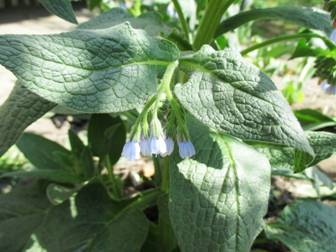
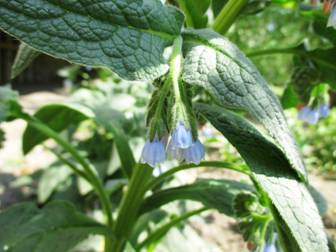
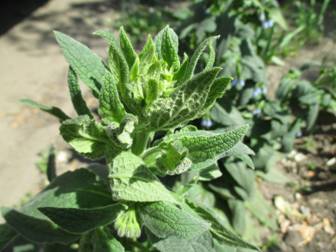
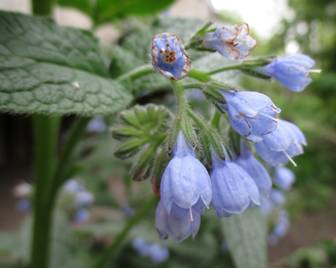
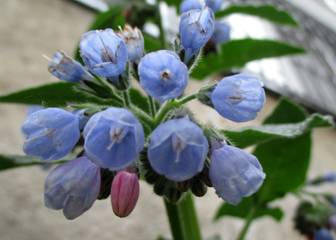
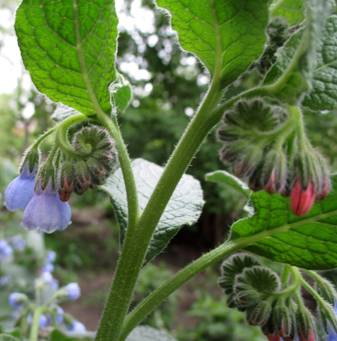

Caucasian Comfrey (Symphytum caucasicum), fam. Boraginaceae.
A perennial herb grown as ornamental. Its pink buds give birth of blue flowers – such a transformation is typical for Boraginaceae (Borage) family, please compare with Lungwort and Houndstongue. Comfrey starts to bloom in May.
Comfrey roots are used in medicine, having a very wide range of applications. The wound-healing and antiinflammatory properties, particularly for bone tissue, are most pronounced. Here is why it has folk names "boneset", "knitbone", etc. There might be a confusion that Ukrainian name of Comfrey sounds similar to Russian name of Field Larkspur (Delphinium, Consolida), which is completely different plant from the Buttercup (Ranunculaceae) family.
Besides, Comfrey contains toxic components, so a strict dosage should be kept when it is used. External use is much safer.
The leaves and shoots of comfrey contain lower concentrations of active substances, so they can be used as fodder for cattle and poultry, bringing high crops of green stuff. Blooming comfrey is a rich source of honey. If you grow comfrey in the garden, please don't allow this quite aggressive plant to displace all its neighbors.